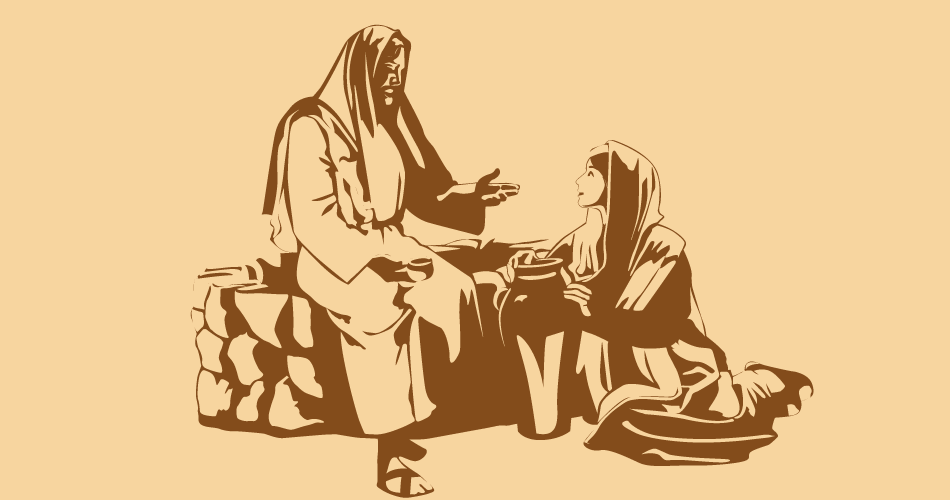“Daughter, your faith has healed you. Go in peace and be freed from your suffering.”
(Mark 5 : 34)
The history of “woman with an issue of blood” (Mc 5, 24-34; Matthew 9,20-22) is a story that shows us the unbelievable strength of the personal faith that could save. There are other stories in the New Testament where the characters approach Jesus to find their remedy (Mark 5,21-41; Matthew 8,1-4; Matthew 14,34-36; Matthew 15,21-28; Matthew 17, 14-21; Luke 7,36-50; Luke 17,11-19; Luke 18,35-43; John 4,46-54).
The woman is not named. She is described through her illness (Mark 5,25). Her physical condition marks her identity. It is not Jesus who approaches the woman to heal her. She takes the initiative by herself to find the healing. She touches (ἅψωμαι) Jesus without asking for his permission. The healing of the woman with an issue of blood becomes possible because of her personal faith.
Jesus felt that force has left him. He explains the woman’s healing by her faith. The healing took place without any bodily contact which shows that there were no outside interventions. The woman is healed thanks to the divine will.
After her recovery, the woman reveals her identity. She doesn’t need anymore to hide. She revealed “the whole truth”. It is not only her body that became pure but also her spirit. The woman is delivered from her physical and psychological suffering. She would no more be rejected by society because of her impurity.
Jesus is the first man to recognize the woman as a person (Mark 5,34). By speaking to her, he recognizes her as a human being. He attributes her a new identity. It’s the idea of new birth. Jesus says that it was her personal faith that healed her. By trusting in the power of Jesus, the woman finds healing.
The personal relationship and trusting faith play the central role in this story.
The crucial moment in the story is the woman’s healing which can be achieved through her faith. Jesus recognizes it by saying: your faith saved you.
For the best understanding of the importance of her healing, it is important to clarify the context of the time. The anthropologist Mary Douglas shows the importance of respecting the laws of purity in Jewish society. She develops her theory of the organization of Jewish communities around the division of space. According to her, social order can be ensured thanks to the division between the pure and the impure. According to this worldview, defilement can be dangerous because it brings disorder. To access the sacred, the person must remain pure without having any contact with impurity.
The woman with an issue of blood is impure. Her impurity is called “zabah”. Zabah is considered as one of the great impurities (as leprosy). Commentators talked about “Jewish disease” of the Jewish woman who must follow the prescriptions of the biblical text and the Mishnah to respect the laws of purity. They speak of “Jewish illness” to highlight the physical and psychological suffering of the woman who finds herself truly excluded from her community because of her indefinite state of impurity.
The Zabah woman is forbidden to be present in the Temple and her presence is undesirable in the holy city. She can remain in the community without any interaction with the members of the community. Any contact with her or with her personal things causes a state of impurity. The woman can normally “touch” other people and objects without contaminating them (in some writings she has the status of “untouchable”).
The life of the community was built around the Temple. When the person is excluded from the Temple area, she can no longer really participate in community life and lead an active life.
According to Selvidge, the story of a woman with an issue of blood was written for the release of unclean women from their exclusion in Christian communities. For her, in this story, Jesus must be seen as a “liberal for equality” who wants to suppress the oppression of women and social injustice. She sees Jesus as a liberator of women, who thanks to him are now delivered from Jewish oppression.
Eliot Cohen thinks that the image of the exclusion of women from hemorrhoism is used in the Gospel to show the first believers that they can never be expelled from the Church despite their physical conditioning which can cause ritual impurity in Jewish tradition.
Marc’s story made me think about Viktor Frankl’s book ” Man’s Search for Meaning”. Viktor Frankl is a psychiatrist and neurologist who has been in the concentration camp. In his book, he explains his experience of the camp where he spent 3 years.
Sometimes we have no longer hope, like Viktor Frankl in the concentration camp or the woman with an issue of blood rejected by her community. Despite this, Viktor Frankl said: if we are still there, alive, it shows that life is preparing us for something. Let me paraphrase: if we are still there, that means that God always has plans for us.
Despite our condition which can sometimes seem shabby to us, we must seek the meaning of our existence, the meaning of our life today.
Don’t be afraid to make plans for the future, even if they don’t seem real. We can question God and wait to see what he prepared for us.
The woman with an issue of blood had the life plan in her mind, a spirit of healing, and the faith that she can do it thanks to God and through God.
As Jesus said in Mark 9,23: “If you can believe, all things are possible to him who believes.”

